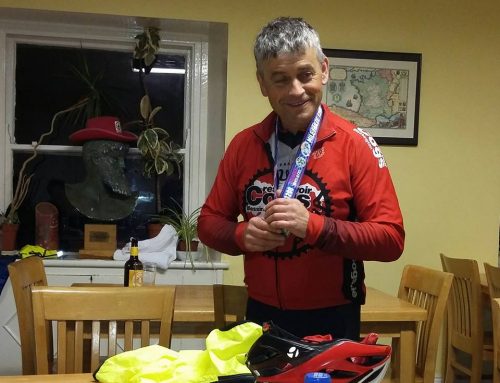Know your numbers – Physical Well being
High blood pressure has no symptoms – that’s why it’s called the silent killer, so the only way to know if you are at risk from a stroke or heart disease is to have a blood pressure check.
Your blood pressure numbers show how hard your blood is pushing against the sides of your blood vessels (arteries) as it travels round your body.
When you have your blood pressure measured it is written like this: 120/80mmHg, which is said ‘120 over 80’. The first number is the systolic pressure, when your heart pushes blood around your body. The second is the diastolic pressure, when your heart relaxes.
Blood pressure usually ranges between 90 to 250 for the top or maximum number (systolic) and 60 to 140 for the bottom or minimum number (diastolic).
A healthy blood pressure is 120/80 or less, but the lower you can get it, the better.
How to lower your blood pressure
Increase your level of activity. Build in 30 minutes of moderate activity at least five times per week. Being active not only gives your heart a good work out, but it also helps your arteries to stay flexible and better able to cope with the demands of daily life. Know how much exercise you take.
Cut down on salt. This means eating more natural foods and fewer processed ones and not adding any extra salt to foods or in anything you cook. Salt naturally raises your blood pressure, eating less will reduce this effect.
Increase your fresh fruit and vegetables. Aim to eat at least five, or better still, seven to nine different portions a day. Fruit and vegetables contain potassium that counters the effect of salt and helps to lower blood pressure.
Drink alcohol in moderation. No more than 2-3 units per day for men and women, or 14 units a week. Drinking more than the recommended limits over a long period will slowly raise your blood pressure. Know your alcohol consumption.
Lose weight if you need to. Your doctor or nurse will be able to tell you your ideal weight. Excess weight puts extra strain on your heart and your arteries. Know your weight.
If you have high blood pressure, another key way to lower it is to take medication prescribed by your doctor. Treatment for high blood pressure is now very successful and there is a wide range of medicines to choose from. Taking your tablets as prescribed, especially in combination with the lifestyle tips above, will help you to live a longer and healthier life.
Useful links
www.healthyireland.ie
www.parkrun.ie
www.cancerscreening.ie
http://mindfulnessatwork.ie/guided-mindfulness-meditations/
Health Screening
• Go to your GP
• Laya Healthcare’s HeartBeat screening service. The screening gives you: Your Body Mass Index (BMI), Your blood pressure, A physical examination, An electrocardiogram, Consultant Cardiologist review and report. Every Laya healthcare member over the age of 12 is entitled to a screening once every 2 years.
• VHI and other insurers will run a more in depth screen but there may be an additional cost.
• Some employers will now provide health screening as part of their benefits package – ask your HR Department.
Funding your Cycling
Many club members joined after buying a new bike through the Bike to Work scheme, The scheme allows the employee to buy a bike and equipment up to the value of €1000. The employer purchases the bike and the employee pays the sum back through a salary deduction over a period of up to 12 months. The repayment is made before tax and PRSI are applied.
Cycling is one of the best exercises you can undertake in terms of calories burned per minute, it is non-weight bearing, muscle strengthening and can raise the metabolic rate for up to four hours after exercise.
Diet and health
A healthy diet can help reduce your risk of developing coronary heart disease, stop you gaining weight and reduce your risk of diabetes and high blood pressure.
While you need to make sure you eat foods that contain healthy monounsaturated and polyunsaturated fats, too much saturated fat can increase the amount of cholesterol in your blood, which can increase your risk of developing coronary heart disease.
You can have a high cholesterol level even if you are a healthy weight. And even if your cholesterol level is healthy, it’s important to eat well and to be active to keep your heart healthy.
Choosing fats
Monounsaturated fats (found in avocados, olives, olive oil, rapeseed oil, almonds, cashews, hazelnuts, peanuts, pistachios and spreads made from these nuts) and polyunsaturated fats (found in oily fish, corn oil, sesame oil, soya oil, and spreads made from those oils, flaxseed, pine nuts, sesame seeds, sunflower seeds, and walnuts) provide essential fatty acids and fat soluble vitamins – so they’re an important part of your diet.
Wherever possible replace saturated fats with small amounts of monounsaturated and polyunsaturated fats. Saturated fats are found in processed meats like sausages, ham, burgers, fatty meat, hard cheeses including cheddar, cream, butter, lard, ghee, suet, palm oil and coconut oil.
Trans fats are found in fried foods, takeaways, snacks like biscuits, cakes or pastries and hard margarines. Artificial trans fats (or trans fatty acids) are created in an industrial process that adds hydrogen to liquid vegetable oils to make them more solid. This partially hydrogenated oil is less likely to spoil, so foods made with it have a longer shelf life. Some restaurants use partially hydrogenated vegetable oil in their deep fryers, because it doesn’t have to be changed as often as do other oils. Your GP will recommend that you avoid high levels of trans fats because unlike other dietary fats, trans fats both raises your LDL (“bad”) cholesterol and lowers your HDL (“good”) cholesterol.
Top tips to help you reduce your saturated fat
• Swap butter, lard, ghee and coconut and palm oils with small amounts of monounsaturated and polyunsaturated fats, such as olive, rapeseed or sunflower oils and spreads.
• Choose lean cuts of meat and make sure to trim any excess fat and remove the skin from chicken and turkey.
• Instead of pouring oils straight from the bottle, use a spray oil or measure out your oils with a teaspoon. (You can buy spray bottles and pour your normal veg oil into the bottle instead of buying the expensive commercial products)
• Read food labels to help you make choices that are lower in saturated fat.
• Opt to grill, bake, steam, boil or poach your foods.
• Make your own salad dressings using ingredients like balsamic vinegar, low fat yoghurt, lemon juice, and herbs, with a dash of olive oil. (Basic recipe 3 tablespoon oil to one tablespoon of vinegar plus seasonings)
• Use semi-skimmed, 1% or skimmed milk rather than whole or condensed milk.
• Cottage cheese, ricotta and extra light soft cheese are examples of lower fat cheese options. Remember that many cheeses are high in saturated fat so keep portions small – matchbox sized. Opt for strongly flavoured varieties and grate it to make a little go a long way
The average man should have no more than 30g of saturated fat a day, and the average woman no more than 20g a day.






